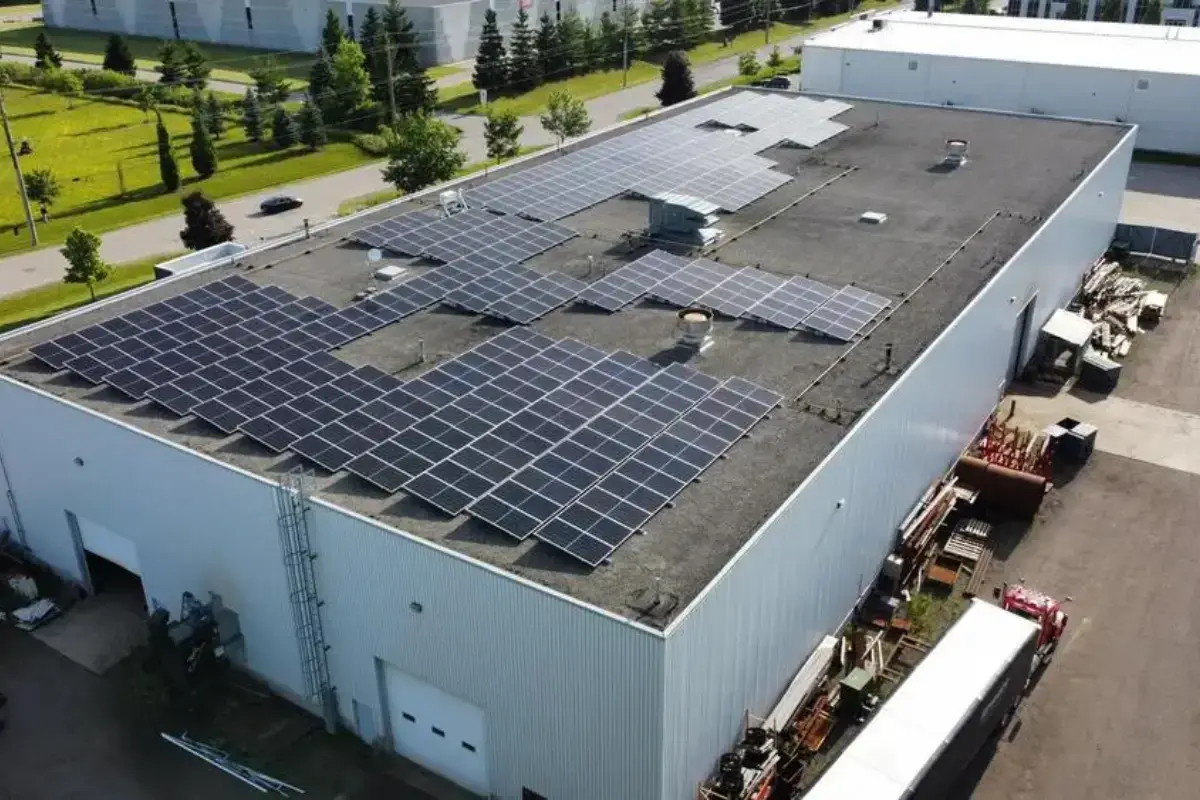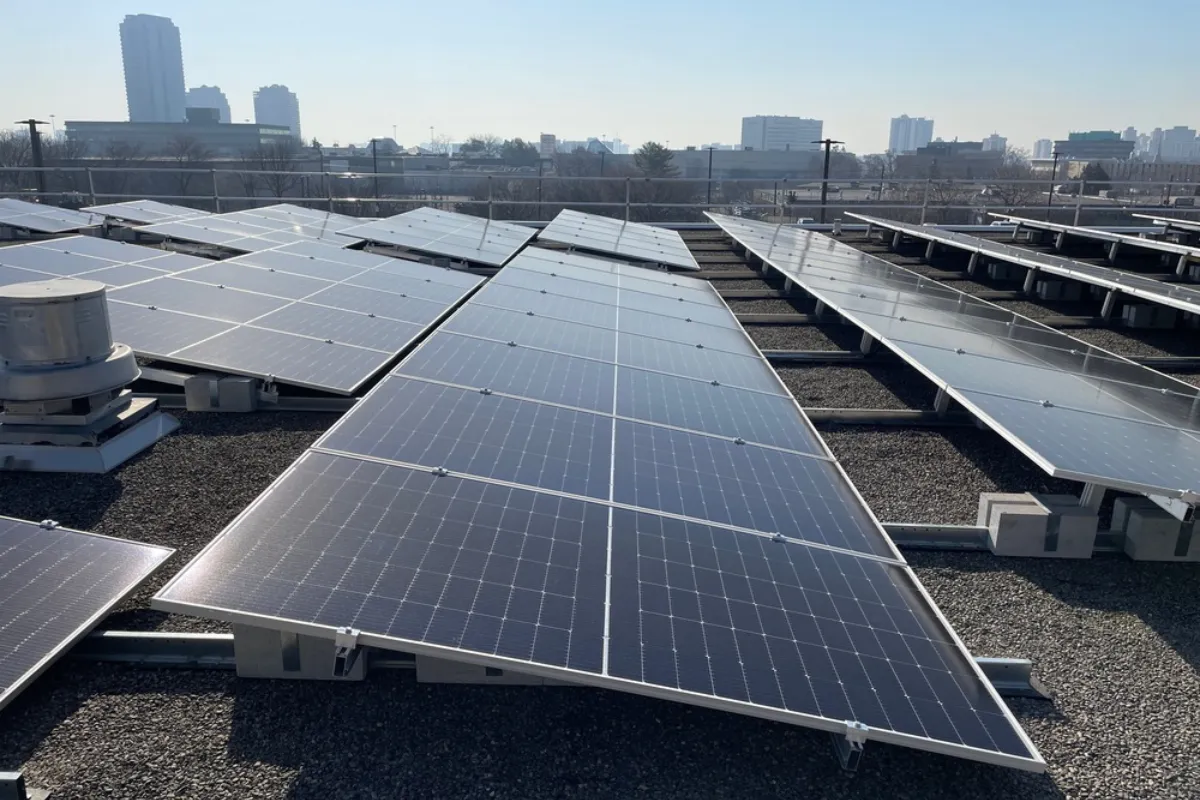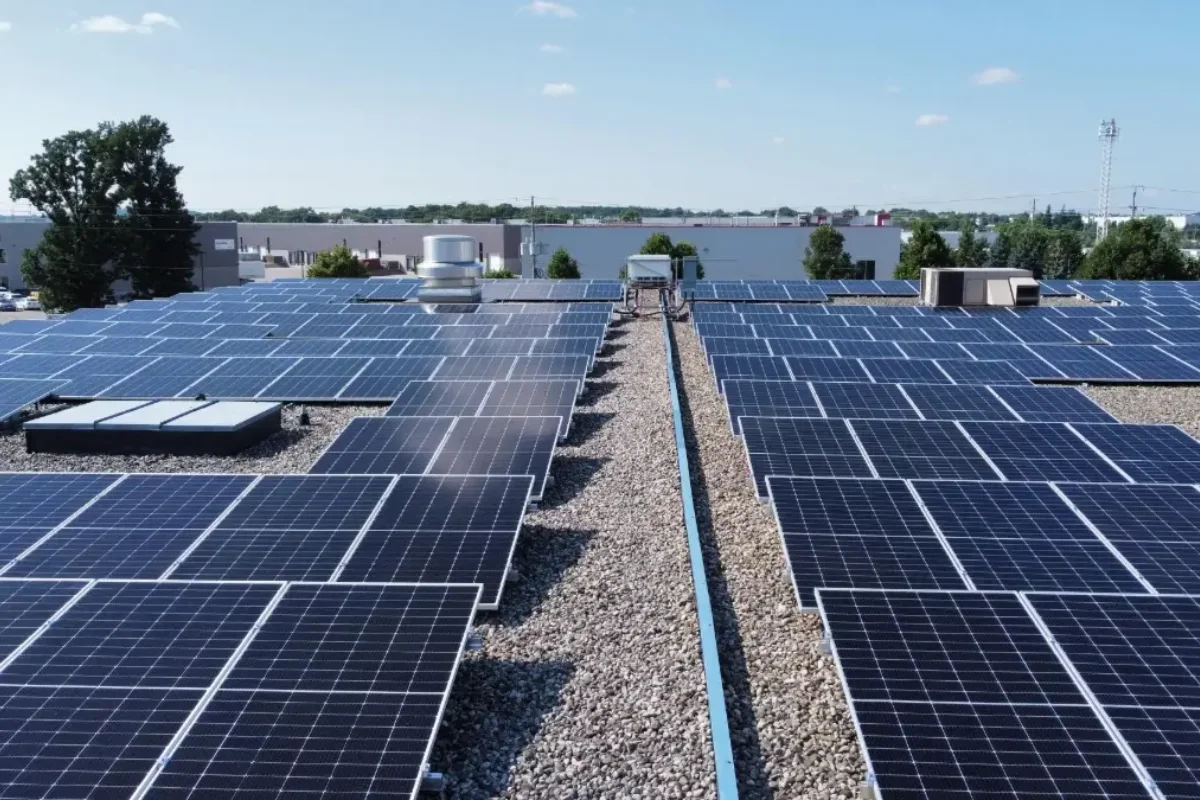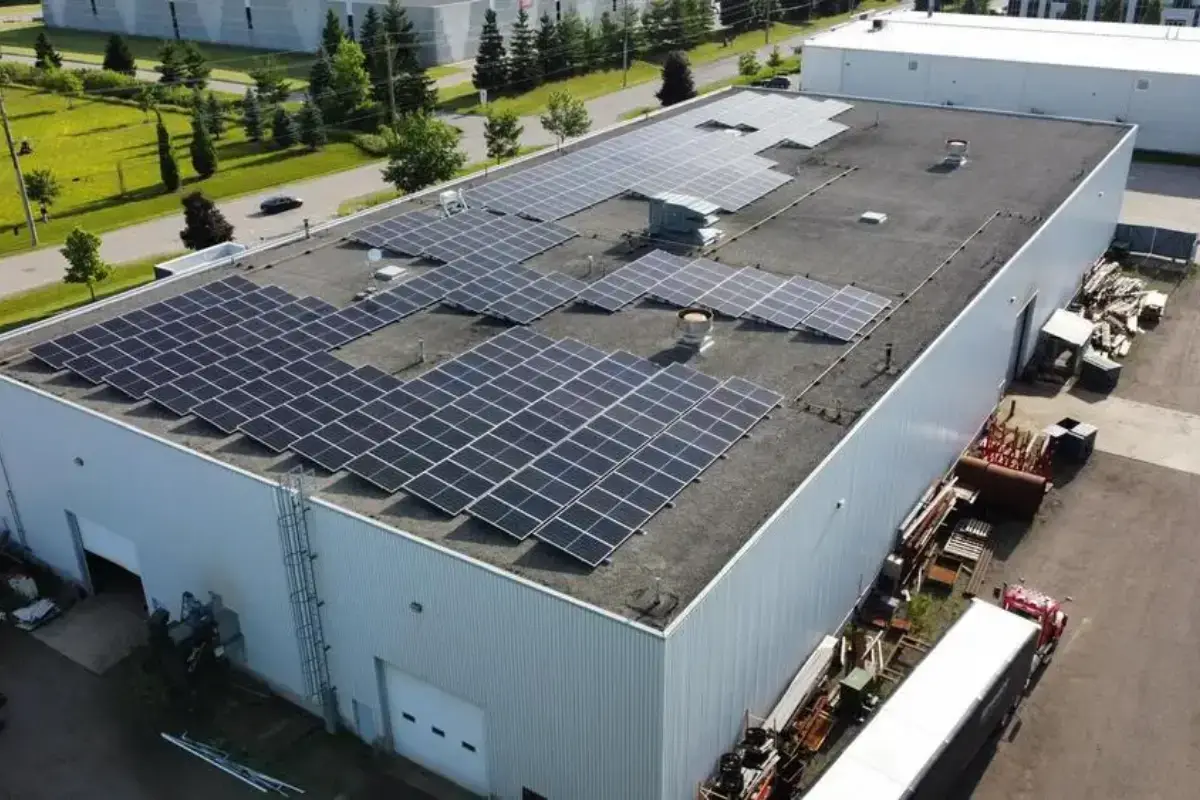Ontario’s commercial and industrial facilities are facing rising electricity costs, driven by Ontario’s electricity supply shortfall.
Demand for electricity is growing, and Ontario’s aging generation infrastructure can’t keep up. This is why the Ontario Government launched its Load Displacement Incentive, which provides a powerful financial incentive for commercial and industrial electricity consumers to generate their own electricity on site.
Load Displacement simply means that any solar power which is generated on site is consumed on site, with no exports to the grid.
Load Displacement systems can deliver a 2 – 5 year simple payback, because of the significant capital incentives provided by the Ontario Government of up to $860,000 per project ($860 per KW up to 1MW) or 50% of project costs in some cases.
What is Load Displacement?
Load Displacement (LD) refers to electricity generated behind the customer’s meter that is consumed exclusively by the facility.
In Ontario, the Distribution System Code defines LD systems as non-exporting — meaning no electricity is sent back to the grid.
This makes LD very different from Net Metering. Under Net Metering, surplus electricity can be exported to the grid in exchange for bill credits.
With Load Displacement, the system is specifically sized to match on-site demand, ensuring that generation is consumed entirely within the facility.
Who Benefits from Load Displacement?
Class A and Class B consumers — large industrial, warehousing and manufacturing and assembly with high demand loads will achieve the quickest simple paybacks with Load Displacement.
These facilities operate consistently throughout the day, which aligns well with solar generation profiles.
Ontario offers a subsidy covering up to $860,000 per project, or 50% of project costs for larger Load Displacement systems. This makes LD an especially attractive solution for organizations seeking long-term operating cost reductions.

How Load Displacement Systems Are Sized
To size a Load Displacement system properly, we take a facility’s hourly interval data, available from the utility, to ensure that a solar system is not oversized, and that most kWh generated by the facility will be consumed on site, and not exported. Export of kWh to the grid is not permitted in Load Displacement configurations. So too many ‘exported’ kWh will be wasted.
The key to a successful Load Displacement project is sizing.
To size a system properly, Alectric Renewables uses hourly interval data from the local utility. This data shows when and how much electricity a facility consumes, allowing engineers to design a solar system that aligns closely with on-site usage.
This approach ensures that almost all kilowatt-hours (kWh) generated by the solar PV system are consumed directly within the facility.
The result is maximum benefit from the system, with no wasted electricity generation.
What Industries Are Best Suited For Load Displacement?
Facilities that have a high Demand Load (expressed in KW) are good candidates for Load Displacement. This includes all Class A consumers, and many Class B consumers as well.
A subsidy is available, up to $860,00 per project, or 50% of project costs in some cases, for Load Displacement systems in Ontario.
Load Displacement vs. Net Metering
| Factor | Load Displacement | Net Metering |
| Export | Not allowed | Allowed |
| Credits | None | Credits carried up to 12 months |
| Best for | Class A, high demand, subsidy-driven projects | Class B or lower demand clients |
Load Displacement and Net Metering both play a role in Ontario’s solar market.
The right option depends on facility size, demand load, and long-term energy goals.
Why Choose Alectric Renewables?
Alectric Renewables has delivered over 150 MW of solar PV installations with 2.5 GW under development. The company is trusted by leading corporate clients for its integrity, technical expertise, and long-term project partnerships.
Benefits of partnering with Alectric Renewables include:
- A proven track record of on-time, within-budget delivery.
- Exclusive use of high-quality materials and technologies.
- A real-time client portal for project tracking.
- A reputation for integrity and reliability that sets Alectric Renewables apart from competitors.
While others may focus on volume, Alectric Renewables remains committed to building lasting relationships and delivering the highest-quality installations in Ontario.
FAQs About Load Displacement in Ontario
What is Load Displacement in Ontario?
It is behind-the-meter solar generation used exclusively on-site, with no electricity exported to the grid.
Who qualifies for subsidies?
Any C&I electricity consumer in either Class A or Class B can access subsidies covering up to $860,000 per project, or 50% of project costs.
How are Load Displacement systems sized?
By analyzing hourly interval data from the utility to ensure nearly all generation is consumed on-site.
What’s the difference between Load Displacement and Net Metering?
Load Displacement systems produce electricity that is 100% consumed on site. Net Metering allows exports and credits.
Ready For Your Free Site Evaluation?
Load Displacement offers a clear path for Ontario commercial and industrial electricity consumers to reduce electricity costs, improve sustainability, and access significant subsidies.
By aligning solar generation with on-site demand, businesses can achieve long-term energy savings without relying on grid exports.
Alectric Renewables specializes in delivering tailored Load Displacement solutions for industrial, warehousing, and corporate office facilities across Southern Ontario.
Schedule Your Free Site Evaluation today to see if your facility qualifies.




